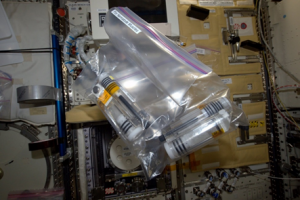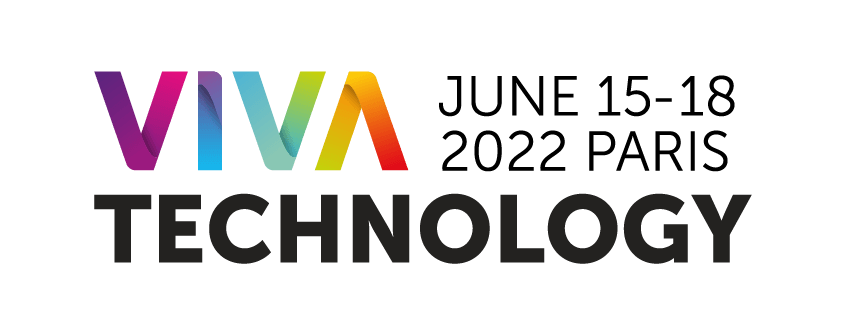A combination of demographic, market and technology trends is making digital transformation increasingly critical to the future of healthcare. At the same time, it opens new possibilities at the crossroad of space technologies and health.
Synergies between health and space are not new. Few was known on the effects of space flights and its impact on human physiology and mental health in the early days of space exploration. The individual approach of space medicine can be even seen as a frontrunner of today’s developments of personalised medicine. Technological developments from monitoring devices to robotic arms have found their way into medical devices on earth. In parallel, satellites had a strong impact on human and environmental health since the 1980s with its revelations on ozone depletion, but also contributions to health issues related to mosquito-borne diseases, such as malaria. Telehealth through communication satellites was often the only solution for the provision of connectivity in remote areas, but also during emergencies and disasters. Strong collaboration among space agencies and its embeddedness in international agreements and bodies ensures the application and dissemination of innovative space-based health solutions globally.
ESA has played a key role in these developments. With emerging new technologies and use cases, ESA is committed in supporting industry and public partners in building solutions for tomorrow. Most recent activities include the organisation of workshops to connect stakeholder groups and further support the use of Earth Observation, Satellite Communication and Navigation in the field of health (Space for intelligent Health, EO and AI for Health and Urban Resilience, among others). Immediate communication and containment support during the COVID-19 pandemic and the support of countries in recovery through RACE are a few examples of the recent application of innovative space solutions to health on earth. Various tenders provide technical and financial support to SMEs to further develop their ideas and technical capabilities.
Space and Health: An overview
The following paragraphs provide an overview and a summary of current developments of space technologies and data in the field of health and health care. Connectivity through the integration of 5G, innovative technologies (robotics, AR, 3D printing, sensors, among others) but also big data platforms and analytics will be driving this integration.

Medical and biomedical research
The effects of microgravity on biological, chemical and physical processes which can be observed in space-based laboratories enable both public and private actors to elevate their understanding of a broad range of diseases and to improve as well as develop new medicine and treatments for humans on Earth. For example the absence of sedimentation causes cells to grow faster and crystals to form more at significantly higher quality which makes space an ideal environment to speed up research and testing in the pharmaceutical and biomedical industry. Possibilities includes but are not limited to protein crystallization, 3-D tissue cultures, tissue regeneration, DNA regulation, drug and vaccine development, stem cells, and treatments for diseases such as cancer and other life-threatening and debilitating conditions. In particular the formation of protein crystals is key to the pharmaceutical industry which uses crystal dissolutions to deliver medications in the fight against a broad range of protein aggregation-related diseases (Alzheimers, Diabetes, Parkinsons, etc.). Further revenue-generating applications can be found in drug design, structural biology and bio separations.
The use of nanotechnology in medicine offers some additional new possibilities for the development of new drug delivery mechanisms, diagnostic techniques, antibacterial and wound as well as cell repair. In 2019, the Nano-Antioxidants project studied the use of nanoceria to treat oxidative stress in the muscle tissues indicating that they work better and longer than traditional antioxidants such as vitamins and giving hope to the emergence of innovative strategies for maintaining and improving muscle mass in an number of pathological conditions. In 2021, ESA expects the first commercial research project to be implemented focusing on the study of nanoparticles for targeted delivery and controlled release of therapeutic agents in the treatment of cancer and diseases affecting the central-nervous system. Further commercial research projects are expected to investigate improved osteoporosis treatment and the provision of personalised medicine.
Fluid physics can give further insight into e.g. gas-liquid separation which may benefit researchers to mix liquids that would not usually combine on Earth and to better understand the physical structures of their drugs and drug targets. In the future, and in the context of personalized medicine, even individual probes could be flown for testing. For the future, Space applications sees drug discovery, and wound healing as main future markets, followed by stem cell R&D.
An overview of basic, applied, and commercial research opportunities was recently presented by ESA experts.

Telemedecine: Remote Diagnosis, Treatment, and Monitoring
Telemedicine is the provision of healthcare services where traditional face-to-face patient – doctor interaction (or doctor – doctor) is replaced by over-distance interaction through the use of ICT. Telemedicine solutions are revolutionizing the healthcare industry through numerous applications, mainly in the fields of healthcare prevention, diagnosis, patient treatment and monitoring. The consistently growing cases of chronic diseases, heart failure, asthma, cardiopulmonary disorders are accelerating the development of these advanced real-time patient monitoring solutions. This includes teleradiology, teledermatology, telestroke/teleneurology, and telemonitoring for various chronic diseases such as diabetes.
By 2025, 20% of medical services could be replaced by artificial intelligence, especially in diagnosis, prevention and monitoring. Insurance companies will likewise tap into big data to better understand behaviours of their clients and adopting policies. With the current COVID-19 pandemic crises the uptake of these solutions (e.g. virtual visits and patient monitoring/treatment) is not just expected to accelerate but also become the new standard of care to remotely asses a large population of patients. Also the field of mental health, where the pandemic has disrupted or halted critical mental health services in most countries worldwide, has seen rising demand caused by fear, isolation, beaverement, or loss of income.
ESA has a long-lasting history in the provision of connectivity in rural communities through satellite communication worldwide. The increasing use of digital technologies in form of mobile phones, social media, wearables and sensors, are seen as a possibility to advance health provision and education in low- and mid-income countries. The integration of 5G will further offer the needed bandwidth and therefore is expected to be the key enabler for these new solutions, offering real-time and high quality video capabilities to various telemedicine platforms. Applications such as Augmented Reality and Virtual Reality will further enhance the doctor’s ability to deliver innovative and less invasive treatments but can also be used for own personal and skills development. IoT devices, such as wearables, will be able to deliver real time remote monitoring and increase patient engagement.

Health Infrastructure and Logistics
Digital technologies can support public health services by integrating care, identifying and reducing risks, predict and help manage population health needs and improve the quality of data flows. Improving public health and making use of scare resources in the most efficient way are the main challenges in the field of health infrastructures and logistics.
Satellites can support areas such as pandemic & disease surveillance, population and health management, but also the incorporation of environmental risks including air pollution, into planning, decision making and monitoring. On national level, more and more countries are building up national digital health data hubs were satellites can supply additional social and environmental data. From a regional perspective, hospitals are in need of better planning and resource allocation, especially in times of tight public budgets and high fluctuations. The hospitals of the future will have to redefine healthcare delivery by optimizing inpatient and outpatient settings and integrating digital systems into traditional hospital services, including the integration of teleservices. Emerging features include centralized digital centers to enable decision making, continuous clinical monitoring, improved surgeries (VR, robotics, and 3D printing) and the use of smaller and portable devices.
Technologies will also play a key role in providing enhanced planning, synchronization and collaboration in the supply chain. The use of Radio-Frequency Identification (RFID) and real-time locations systems (RLTS) for asset tracking by healthcare organizations help streamlining the supply chain and improve visibility on inventory. In terms of last mile delivery, the potential of drones, enabled by Galileo, shows a critical source of opportunity for cost efficiency. It can provide the healthcare supply chain a competitive edge and versatility in delivering vaccines, medications, supplies and blood samples to the source effectively and fast, especially to communities living in remote areas. The increasing use of AI and predictive analytics tools is expected to support more accurate forecasting of demands and optimize inventory planning.

One Health, Environmental Risks and Recovery
Onehealth is an interdisciplinary approach taking into account the connection between humans, animals, and the environment. Increasing environmental devastation, habitat degradation (through deforestation, desertification, and urban sprawl) and accelerating effects of global warming leading to increased domestic-animals-wildlife-human interactions. More than 75% of emerging infectious diseases in humans are zoonotic, hence shared between animals and humans, and the majority of these are associated with wild animal reservoirs (including H5N1, the West Nile Virus, SARS, Ebola or monkeypox viruses). Global climate change and warming is expected to have an impact on air-borne, food-borne, rodent-borne, vector-borne and water-borne diseases. New data-sets and -models are needed to better understand and predict developments of diseases. Near-real time data on flooding, irrigated areas, observed and forecasts rainfalls, temperature but also socio-economic data on village, markets and road networks can be fed into these models. Space supports in this way early warning systems by risk modelling and mapping, the identification of hotspots and its visualisation to manage those epidemics. Current status and development of innovative digital solutions using earth observation data had been discussed in the online workshop EO and AI for Health and Urban Resilience.
Other risks for human health can be caused by environmental pollution. This includes for example air pollution. Satellites can be used to monitor air pollution and help identifying links with non-communicable diseases such as asthma or coronary artery diseases. Sentinel-5P monitors methane (CH4), formaldehyde (HCOH), aerosol, carbon monoxide (CO), nitrogen dioxide (NO2) and sulfur dioxide (SO2) in the atmosphere (with reliable regional distribution and temporal dynamics). Pollens, asbestos, volcanic ash, and wildfire smoke are also of particular importance. The ESA Downstream Gateway discussed recently how to tackle Air Quality in urban areas. Satellites can also detect the emergence of algae bloom which are an environmental and public health issue. This include cyanobacterial which are harmful because of their ability to form dense biomass and produce toxins. Parameters that can be derived or estimated from satellites include turbidity, suspended matter, chlorophyll-a, harmful algae bloom and trophic state classification. Availability and access to water can likewise be monitored from space.
Satellites do not only monitor health threats, but also recovery. NASA, JAXA, and ESA have setup, a tool to understand the effects of the COVID-19 pandemic on social, economic, and environmental variables (including water quality), the Earth Observation Dashboard. At the same time, ESA and the European Commission, developed the twin platform, “RACE” — Rapid Action coronavirus and Earth Observation for user-friendly and free access to data using Copernicus data to measure the impact of lockdowns and to monitor post-lockdown recovery.


Emergency and Disaster Management
Research confirms that there is an increase in climate related disasters over the last 20 years, highlighting the need for robust emergency and disaster management (storms, floods, droughts, wildfires). Disaster management aims to reduce, or avoid, the potential losses from hazards, assure prompt and appropriate assistance to victims of disaster, and achieve rapid and effective recovery. It focuses on mitigation, preparedness, response, and recovery. ESA has a long-standing history in the pooling and providing of resources/expertise and supporting the development of space enabled solutions.
Space technologies play an important role in many areas of disaster risk management and emergency response. ESA, being one of the initiators for the International Charter Space and Major Disasters, has provided together with the other 17 members (consisting of space agencies and space system operators) satellite data, resources and expertise in supporting rapid response to major disaster situations. This pooling of services is also currently undergoing in EU’s Govsatcom initiative where, with support from ESA (Govsatcom Precursor), it is responding to the growing need of secure communications to the benefit of citizens, institutions and commercial users in Europe. Copernicus Emergency Management Service (CEMS), Galileo’s search and rescue service and, especially during corona times, the Rapid Action on Coronavirus and EO (RACE) initiative are representative of ESA’s expertise and involvement in developing services and systems for emergency and crisis scenario’s as well support in its recovery. Capacity development is undertaken in low- and mid-income countries to further enhance capacities and technical skills in preparedness.











